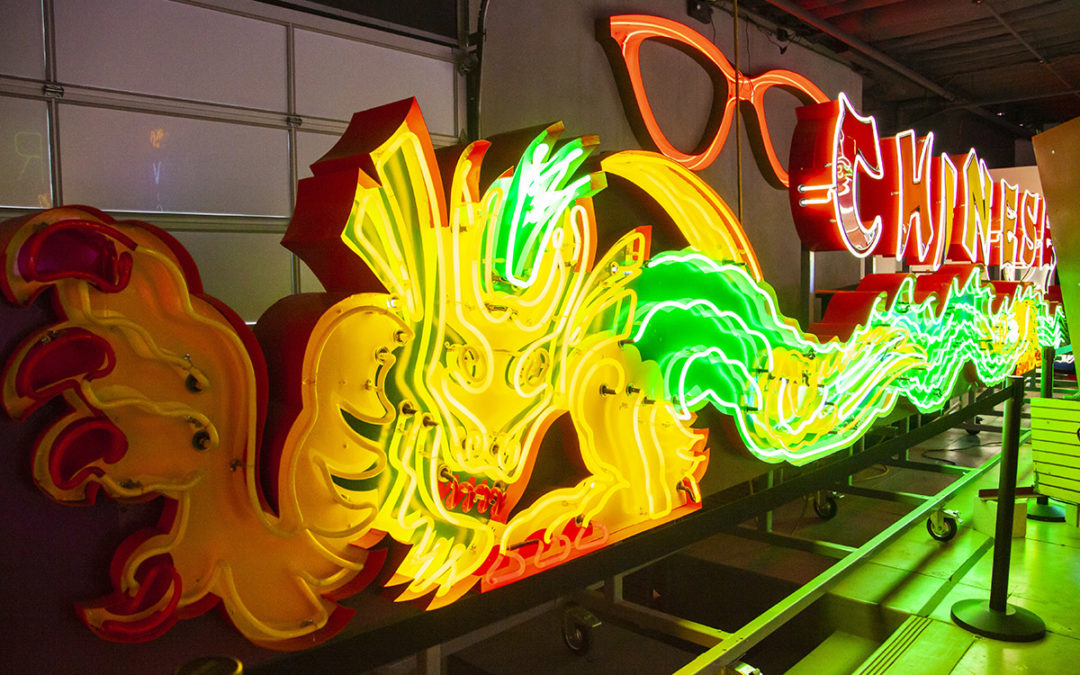A Trip to MoNA
On October 16th, we met up with Paul and Christine Byers with Culver City at the Museum of Neon Art in Glendale to discuss the restoration process and neon in general.
Paul works closely with the MoNA so we had a great insiders look at the history of neon. Paul’s wife is also heavily involved with the history/restoration of neon and is on the MoNA board of trustees.
The Culver Theatre opened on August 13, 1946, with a seating capacity of around 1,100, showing the film “Red Stallion”
Albert R. Walker was the architect of record and Carl G. Moeller was the design consultant. The design style was “Streamline Moderne” or “Art Moderne;” a later version of art deco architecture which was less ornamental and more ‘aerodynamic’ in look.
The interior of the Culver was a “Skouras Style” confection. At a time when much design was getting the modern look, the head of Fox West Coast Theatres, Charles Skouras, had his architectural team in the late 40s and early 50s take a different tack towards a lush neobaroque feel.” Source








